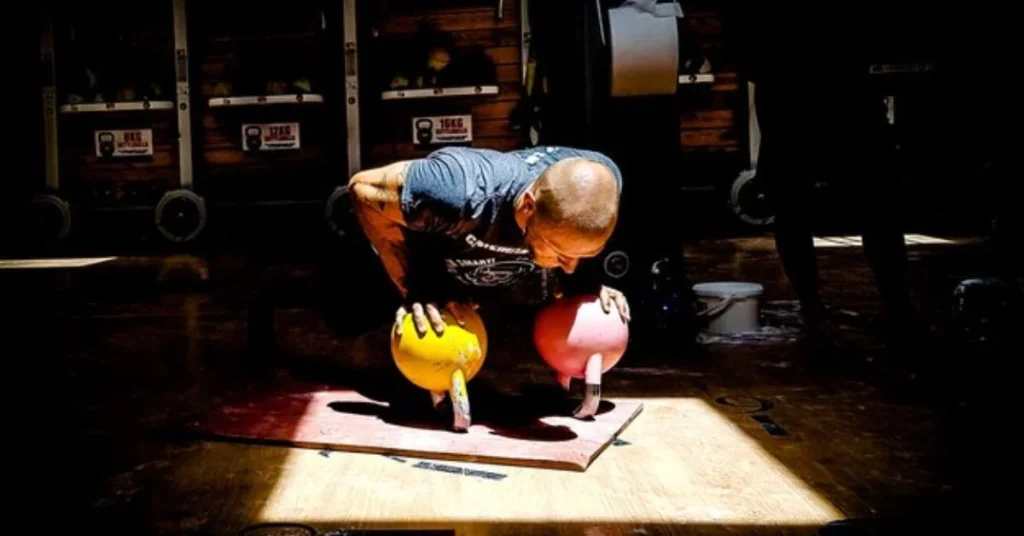Strength training routines are often categorized into programs focused on building size or maximizing strength. The “Boring But Big” (BBB) program, developed by elite powerlifting coach Jim Wendler, stands out as a unique approach to achieving both. This program is designed to help lifters build strength while also adding muscle mass, making it ideal for both new lifters seeking well-rounded development and experienced lifters who want a break from complex, high-intensity programs. BBB is structured to focus on fundamental, heavy compound lifts and follows a simple yet demanding setup that emphasizes volume and progressive overload.
In this article, we’ll delve into the mechanics of the Boring But Big program, its foundational principles, how it works when following a 3-day-per-week schedule, and how it can be customized based on individual goals. We’ll also review the results lifters can expect, address common questions, and provide practical tips for getting the most out of this program.
Understanding the Boring But Big Program
The Boring But Big program is part of Wendler’s 5/3/1 training system, which focuses on building strength through a set of four primary lifts: the squat, bench press, deadlift, and overhead press. Each training day prioritizes one of these main lifts. Following the heavy sets of the primary lift, the BBB method introduces five sets of ten repetitions (5×10) at a lighter weight. This extra volume is where the “big” in “Boring But Big” comes into play.
The program’s simplicity lies in its repetition and volume. Lifting at high volumes with lighter weights after the primary strength-building sets allows the muscles to experience time under tension, stimulating growth without requiring the lifter to focus on overly complex movements.
Boring But Big Principles
The primary principles of the Boring But Big program include:
- Focus on Compound Lifts: Each workout is centered around one of the major compound lifts. By focusing on these lifts, the program ensures that the lifter works multiple muscle groups simultaneously, building foundational strength.
- High Volume for Size: The additional 5×10 sets encourage muscle hypertrophy (growth), a key component for those looking to increase muscle mass.
- Progressive Overload: The program follows a 5/3/1 loading scheme, ensuring that lifters are gradually increasing their working weights over time, which is essential for both strength and muscle gains.
- Simplicity and Consistency: Unlike many programs that have variable exercises each week, BBB sticks to the same core lifts. This approach makes it easier for lifters to track their progress and focus on gradual improvement.
Boring But Big: 3 Days a Week Option
Although the standard BBB program is set up to run on a four-day weekly schedule, many lifters find success with a 3-day-per-week variation. The 3-day-per-week version is well-suited for those with limited training time or for those who prefer a lower weekly frequency. By simply rotating the main lifts each week and ensuring balanced volume, the 3-day-per-week BBB option can yield the same quality results.
Sample 3-Day Boring But Big Weekly Schedule:
- Day 1: Squat (5/3/1 sets) + Squat BBB Sets (5×10)
- Day 2: Bench Press (5/3/1 sets) + Bench Press BBB Sets (5×10)
- Day 3: Deadlift (5/3/1 sets) + Deadlift BBB Sets (5×10)
In this version, each lift is performed once per week, allowing for recovery time and reducing the risk of burnout. Lifters may also include accessory work, such as rows, pull-ups, or core exercises, to supplement the main lifts and further support muscle balance.
What Results Can You Expect from the Boring But Big Program?
The results from the Boring But Big program will vary depending on individual factors, such as training history, diet, and commitment to the program. However, BBB is renowned for delivering substantial strength gains and noticeable muscle hypertrophy. Lifters who have completed multiple cycles of BBB often report significant improvements in both their strength and size, as highlighted in many Boring But Big Reddit threads where users discuss their transformations and experiences with the program.
Because BBB requires lifters to push through high-volume sets, this program builds muscular endurance and mental toughness, which are both crucial for long-term progress. Notably, BBB’s simplicity allows lifters to master their form on the primary lifts, further ensuring consistent progress and reducing the risk of injury.
Key Results Observed from Boring But Big Program:
- Increased Muscle Mass: The high-volume BBB sets are particularly effective for promoting hypertrophy, resulting in increased muscle size, especially for those who combine the program with a nutrient-dense diet.
- Enhanced Strength: The primary lifts in BBB follow the 5/3/1 approach, which is structured to enhance absolute strength in the big lifts, a foundational aspect for any lifter.
- Improved Technique: By focusing on compound movements and consistent practice, lifters develop better form, which translates to more efficient lifting and longevity in their lifting journey.
- Fat Loss (With Appropriate Diet): Although BBB is not specifically a fat-loss program, the high volume and intensity can promote a leaner physique, especially when paired with a caloric deficit.
Boring But Big Program Progression
The Boring But Big program emphasizes progressive overload, meaning that each cycle of the program should ideally increase the weights used in both the main lift and the accessory 5×10 sets. Wendler’s original 5/3/1 protocol suggests a steady increase in weights for each cycle, helping to ensure continuous progress.
Practical Tips for Progression
- Increase the Volume Slowly: Adding volume or intensity too quickly can lead to burnout. Stick to Wendler’s guidelines and add weight conservatively.
- Consider Accessory Movements: If certain muscles lag behind, consider adding a few accessory exercises for balance. For instance, adding rows or pull-ups to back day can further support progress.
- Prioritize Recovery: BBB can be taxing. Adequate rest, hydration, and a diet high in protein are essential for recovery and muscle repair.

Customizing the Boring But Big Program
Although BBB is highly structured, there is room for personalization, which is one of the reasons it is so popular. Depending on individual goals, the following adjustments can be made to the program:
- Adjusting Intensity: Lifters can adjust the intensity of the accessory sets. For example, rather than sticking to a fixed weight, lifters can periodically increase the weight for the 5×10 sets to continue challenging their muscles.
- Adding Variety in Accessory Work: The main lifts can remain the same, but lifters can rotate different accessory exercises to prevent boredom and improve overall muscular balance.
- Optimizing Volume Based on Recovery: For those who feel overly fatigued, the program can be modified to reduce the number of sets or frequency. This customization is particularly helpful for older lifters or those with demanding schedules.
Practical Tips for Success on the Boring But Big Program
The high volume and repetition can make BBB mentally and physically challenging. Here are some practical tips for success:
- Stay Consistent: The program’s benefits are cumulative, so consistency is key. Even if a session feels exhausting, completing the scheduled work each week is important for progress.
- Focus on Technique: Given the program’s repetitive nature, lifters should prioritize maintaining perfect form to prevent injury.
- Balance Work with Rest: Boring But Big 3 days a week works well for those needing more recovery time. Sticking to a 3-day schedule can reduce the chance of overuse injuries.
- Adjust as Needed: If a particular lift feels excessively taxing, consider reducing the weight or switching up the exercise order.
Conclusion
The Boring But Big program, while simple, is an extremely effective training method for those seeking a balance of strength and size. By combining heavy lifts with high-volume accessory sets, BBB allows lifters to progressively overload their muscles while focusing on the fundamental lifts. Whether you’re training 3 days a week or 4, the program’s structure is adaptable and can yield excellent results for lifters across various experience levels.
BBB’s focus on consistency, high volume, and progressive overload makes it an ideal choice for those committed to achieving strength and muscle gains over the long term. For individuals seeking a structured, straightforward approach to lifting, BBB may just be the perfect fit.
FAQs
What results can I expect from the Boring But Big program?
Results typically include increased muscle size, improved strength, and enhanced lifting technique. Lifters can also benefit from improved endurance due to the high-volume accessory work.
How does the 3-day-per-week variation differ from the regular BBB schedule?
The 3-day-per-week variation involves performing one main lift per session, reducing the overall training frequency, which allows for additional recovery time while still following BBB’s high-volume structure.
What’s the best way to progress on the Boring But Big program?
Progression is best achieved by following Wendler’s 5/3/1 method, gradually increasing weights with each cycle. Lifters should avoid increasing volume or intensity too quickly to avoid burnout.
Can beginners use the Boring But Big program?
Yes, BBB is beginner-friendly as it emphasizes the core lifts and uses consistent structure, which helps beginners build foundational strength and technique.
What is the significance of the high-volume accessory work in BBB?
The 5×10 accessory sets promote muscle hypertrophy, contributing to increased size. High-volume work also supports muscular endurance and allows lifters to perfect their form.
How should I adjust my diet when following BBB?
A diet rich in protein and calories will support the muscle growth promoted by BBB. Lifters aiming to lean out can maintain a slight calorie deficit while ensuring sufficient protein intake.









